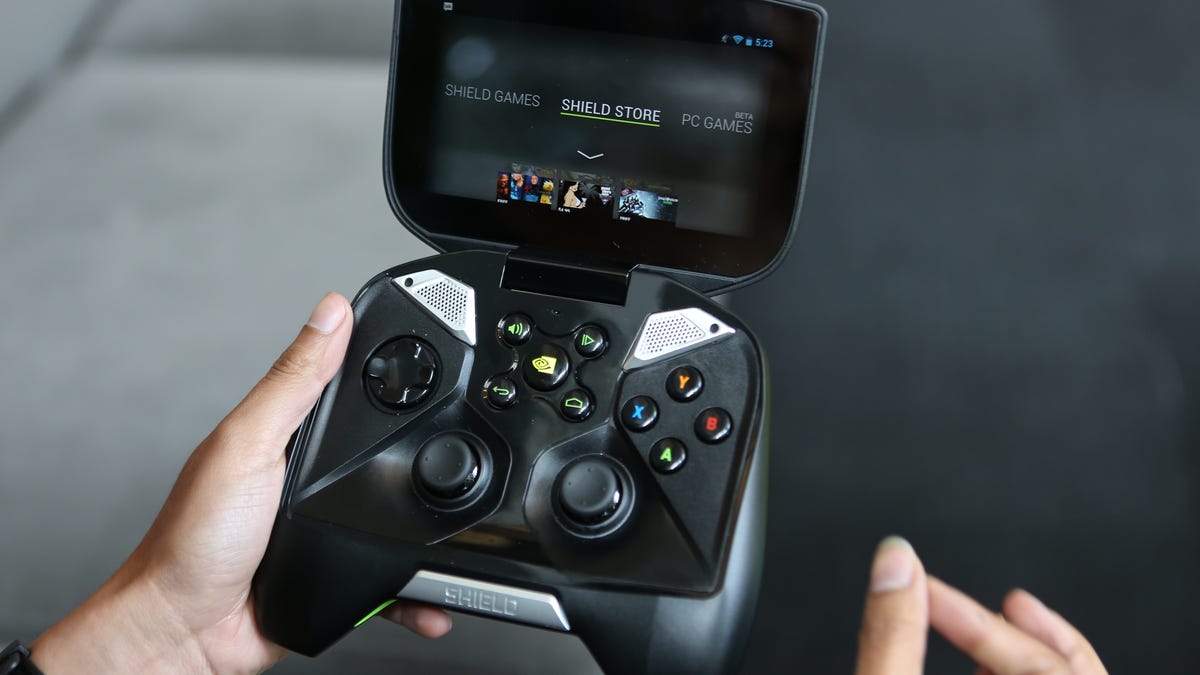Nvidia Shield, Qualcomm Toq: Carrying a torch for consumers
<b>commentary</b> It's a bold leap from mobile chips to product chops for Nvidia, with its game device, and Qualcomm, with its smartwatch. Now the question is whether they'll stick the landing.

Months before the first iPod was announced by Apple, another company -- one that has much to do with the performance of today's Macs -- announced its own digital music player.
Intel's Pocket Concert won praise for its audio quality but wasn't much to look at. The silver-and-blue MP3 player, along with Intel's other consumer products -- a digital microscope and unreleased Web tablet -- failed to get much traction. Intel exited the consumer market with the realization that the best course of action was to stick to its silicon knitting and avoid efforts that required direct consumer marketing like, oh, pay TV services.
Fast-forward more than a decade, and two of the most prominent companies in mobile chip design -- Nvidia and Qualcomm -- have moved beyond their usual sales to device manufacturers and into consumer products featuring their own brand. Nvidia fired the opening salvo with the Shield handheld gaming powerhouse. Now Qualcomm is starting to fulfill preorders for its smartwatch, the Toq.
Not since the 1980s, when Nintendo created a line of simple handhelds called Game and Watch, have the two things had so much in common.
They're metaplatforms. Both the Shield and the Toq have strong ties to Android, the operating system that is on millions of smartphones powered by their respective chip architectures. But both companies have built on top of the popular OS. While the Shield can run thousands of titles from Google Play, Nvidia offers its own game store for titles optimized for its platforms. Toq is a companion device to Android smartphones, but Qualcomm, like many smartwatch purveyors, will have to seek developer support to keep up with competitive functionality.
They look beyond reference designs. It's not uncommon for companies such as Nvidia and Qualcomm to release reference designs that manufacturers can build upon. The Shield and the Toq might qualify for this description. Part of the reason may be the pricing premium versus some comparable products. The Shield stands out at a $299 Android console when many others, like the Ouya and GameStick, can be had for less than $100.
They play off reputations. While both mobile chip companies continue to leapfrog their previous generations, Qualcomm chips place a premium on efficiency, while Nvidia chips are often known for their performance. Although both products are battery-powered, it makes sense that Qualcomm would pursue an emerging category where power is at an even greater premium than it is on smartphones, while Nvidia would pursue one where raw horsepower and graphics excellence are at more of a premium than on your average smartphone.
They have ties to other businesses. If nothing else, the Qualcomm Toq is a showcase for Mirasol, the company's MEMS-based color display technology that excels in sunlight readability while conserving power. The Toq also features wireless charging by WiPower, the wireless consortium backed earlier by Qualcomm (although the company has also embraced other wireless charging standards).
The Shield has a literal (if untethered) connection to another Nvidia business, its graphics cards. By reaching out across the wireless home network, it can play PC games downloaded via the Steam game distribution service hosted on another PC in the house. Think of it as a local version of a service such as OnLive, one that works only if you have a powerful-enough Nvidia graphics card in your PC. Nvidia considers this a way to present the Shield as a one-stop destination for handheld gaming, even though the PC-based streaming isn't available outside the home.
Will the consumer products from Nvidia and Qualcomm fare better than did those from Intel years ago? Neither is aimed at the mass market just yet. But both clearly have stronger ties to their company's core expertise than Intel's products did. Even if the Shield and the Toq don't fire up consumer desires, the companies that produce them will still win if others can pick up the torch using their chips.

